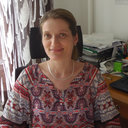TLC-Direct Bioautography and LC/MS as Complementary Methods in Identification of Antibacterial Agents in Plant Tinctures from the Asteraceae Family.
Mots clés
Abstrait
Matricaria recutita L. (chamomile) and Achillea millefolium L. (yarrow) are very common herbs growing in meadows, pathways, crop fields, and home gardens. Preparations from these plants, e.g., infusions or alcohol extracts, are widely used as remedies. Both chamomile and yarrow have anti-inflammatory, analgesic, antimicrobial, and antioxidant properties. Most microbiological assays used today give information only on activity of whole extracts and do not provide information on the composition and activity of individual components. This problem can be solved by using TLC with direct microbiological detection, i.e., TLC-direct bioautography (TLC-DB), followed by LC/MS of active fractions. The aim of our study was chemical and microbiological screening of plant components of chamomile and yarrow tinctures using derivatization reagents and TLC-DB against eight bacterial strains: Staphylococcus epidermidis, S. aureus, methicillin-resistant S. aureus, Escherichia coli, Pseudomonas syringae pv. maculicola, Xanthomonas campestis pv. vesicatoria, Aliivibrio fischeri, and Bacillus subtilis. The identity of compounds exhibiting the widest range of activity (apigenin and α-linolenic acid) was confirmed by LC/MS.




